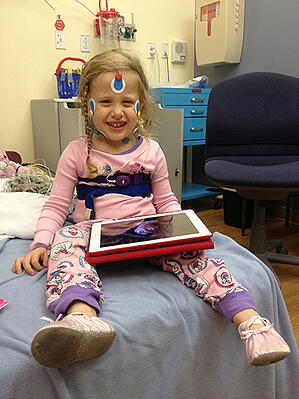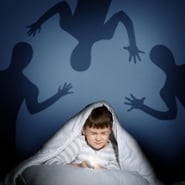Fear can become crippling for children. As a parent center stage with a son confronting fear, the warning signs are what can help the healing process.
As we entered second grade, we thought being afraid of the dark would improve over the summer. However, the sleepless nights continued with pattering of footsteps in our room almost nightly. Walks down the short hallway to his bedroom would halt with the lights on or off with the sun up or down.
Even our dog could not help him be comfortable being in a room by himself or closing a bathroom door. He would take about 2 steps forward then 3 steps back.
And then we noticed snoring. Fortunately, after visiting his pediatrician, he suffered from seasonal allergies and his normal medicine was not working. But the first step was diagnosing and eliminating issues for him.
OSA in Kids
Obstructive sleep apnea (OSA) is a common, serious condition in adults but is a condition in children that can lead to learning, behavior, growth, and heart problems. According to the American Sleep Apnea Association, symptoms and signs in children suffering from OSA can include:
- snoring
- long pauses in breathing
- tossing and turning in bed
- chronic mouth breathing during sleep
- night sweats
Between the ages of two and eight-years-old, only one to five percent of children are diagnosed. Studies have shown that if left untreated, sleep apnea in children can lead to issues later in life like attention-deficit hyperactivity disorder. In fact, as many as 25 percent of these cases may have symptoms of OSA.
Learning difficulties, behavioral issues, bed-wetting, obesity, sleep-walking, and other hormonal and metabolic problems can be the consequences of chronic fragmented sleep like OSA.
How to Put Your Child’s Fear to Bed
A few tips that helped our son continue to move beyond his fear and get a better night sleep are simple remedies for any family to try.
- Sound machine or music. For our son, a sound machine was ineffective. However, a soundtrack of 30 minutes of ocean music did the trick. He loves the beach, even if only visiting it twice in his life, but it helps soothe him at bedtime. Don’t be afraid to try a few options. We tried several before finding what works.
- I dismissed essential oils so many times since they seemed like an expensive way to bring smells into the home. But when we tried lavender in his room with a night light diffuser, we have not looked back. We decided to try a brand found at Home Goods and TJ Maxx to save money per ounce, and so far it has done the trick.
- It seems simple, but a problem we were noticing with his fears were tummy aches that led to constipation. Our pediatrician recommended probiotics and different foods to calm his tummy. What has proved most helpful is Good Day Chocolate probiotics for kids. He takes one at night and he has not had any constipation in 3 months.
- Common for adults, there are also natural supplements that work for kids. The same brand, Good Day Chocolate, makes sleep pills that he takes during the week to help with his sleep.
- Another common solution to sleeping problems is exercise for adults, but it is also a great remedy for kids as well. We put our son in karate to build his confidence against his fears and help him have a regular outlet for fun and exercise.
- Prayer and a book. A chapter book has been a big step up in the routine at bedtime since our son is enjoying reading more and comprehending longer stories. He is excited to hear what is next in the book we are reading and knows it comes with bedtime. Prayers help as well including him asking for a restful night.
Sleep disorders in children can lead to lower school grades and cranky children to even behavioral problems in their social lives. When we started the school year, we were looking forward to a routine that was inconsistent over the summer months.
This year, the routine to jump-start the year took a few weeks for adjusting. We realized he was battling a small case of seasonal affective disorder (SAD) which can hinder the ability to acclimate to a new schedule or a new routine. Many attribute SAD to winter months but for those who suffer from sleep disorders or dislike a change in routine, SAD can affect any age during any season.
Taking Your Child to Her Doctor?

The first step is to alert your child’s pediatrician if you believe that your child is suffering from a sleep disorder. After a proper physical exam, they can determine if a sleep study is best for your child. In our case, it was finding the right balance to the road to a fearless nighttime routine.
We are still in the thick of it, but with small strides along the way, our pediatrician and other parents with similar struggles have been helpful.
Your Next Step
An A.W.A.K.E. support group through the American Sleep Apnea Association can help with any questions to others who have experienced misdiagnosis and the road ahead while dealing with pediatric OSA.
Steps are available with our doctors to diagnose your child correctly through a free pediatrics phone consultation at the Alaska Sleep Clinic. In fact, Alaska Sleep Clinic is the ONLY sleep lab in Alaska with a Pediatric Medical Director who specializes in sleep, Dr. Harry Yuan. Read more about Dr. Yuan here.
You can also download our FREE Pediatric Study E-book simply by clicking the picture below.












